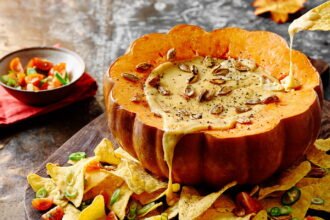Introduction
Makha is a small word with big meanings. It can point to a festival, a month, a star, or a simple food bowl. People use the word in different lands and languages. That makes it rich and interesting. This article will explain the main senses of makha. I will show history, rituals, recipes, and everyday uses. I will also add simple examples and tips. Each part is written in plain English so anyone can read it. By the end you will know why makha matters in religion, astrology, language, and kitchen life. You will also find answers to common questions and ways to explore makha further.
What does the word “makha” mean?
The word makha is not from one single origin. In Sanskrit and related languages, similar words mean “feast,” “sacrifice,” or “a joyful gathering.” The sound and spelling vary by place, but the sense of a special time or offering is common. In Southeast Asia, the same root links to a moon festival. In Bengali homes, makha can mean a quick mashed fruit mix served as snack. In astrology, Magha or Makha points to a bright lunar mansion tied to heritage and power. The many faces of makha show how words travel with culture. Each use keeps a thread of meaning about gathering, honor, or strong taste.
Makha in Buddhism: Māgha Pūjā / Makha Bucha Day
One of the best known uses of the word is in the Buddhist festival called Māgha Pūjā. In Thailand the same holiday is often called Makha Bucha Day. It falls on a full moon and honors an important meeting of the Buddha and his early followers. On that day, people go to temples. They light candles, make offerings, listen to sermons, and reflect on ethics. The festival is a calm, reflective time. It reminds people to keep good heart, speech, and action. Many countries in Southeast Asia observe this day with processions and merit-making. If you travel in the right season, you can see beautiful night walks around temple grounds and many people carrying candles and flowers.
Makha as a month: Magha in the Hindu calendar
Makha also connects to Magha, a month in the Hindu lunar calendar. This month usually falls around January–February. It is a time for certain rituals, holy baths, and gatherings at sacred rivers and shrines. Some festivals linked to this time mark harvest and seasonal change. In many places, religious communities use Magha days for extra prayers and charity. The month carries a tone of spiritual renewal after the cold months. Temples often hold special pujas and people plan pilgrimages in this season. The history and timing of Magha are recorded in the traditional calendars and by cultural historians who explain how local customs grew over time.
Makha as a star: Magha / Makha Nakshatra in astrology
In Vedic astrology, Magha or Makha is one of the lunar mansions, called a nakshatra. This nakshatra sits in the sign of Leo and is linked with regal energy, ancestry, and authority. It is often symbolized by a royal throne or palanquin. People born with moon or ascendant in Makha are said to value family tradition and honor. Astrologers often advise focusing on legacy and respect for elders when this star is strong. Many modern astrology sites and classical texts list traits, myths, and suggested practices for Makha-born people. If you study charts, this nakshatra keeps showing up as a sign of leadership and inherited strength.
Makha in the kitchen: a Bengali snack and taste memory
In Bengali homes, makha is a beloved simple mix. People mash ripe fruits like mango, jamun, or guava. Then they add mustard oil, chopped green chilies, and a spoon of kasundi or salt. The result is a sharp, tangy, spicy bowl of flavor. It is quick to make and full of contrast. Makha can be a snack or a side for rice and fish. It is also a memory dish; many people recall their grandmother’s version. Food writers note how makha captures Bengali taste in a small bowl. The dish shows that one word can mean ceremony in one place, and a bright snack in another.
Simple makha (Bengali-style) recipe and tips
To make a quick makha, pick ripe fruit. Cut it small or mash it. Add a splash of mustard oil for bite. Mix in finely chopped green chillies to taste. Put a teaspoon of kasundi or good mustard sauce. Add a little salt and stir well. Let it sit five minutes to blend flavors. Serve with steamed rice, fried fish, or plain snacks. For a milder version, skip raw chillies and use roasted cumin powder. For a fresher twist, add chopped cilantro and a squeeze of lime. The key is balance: fruit sweetness, mustard heat, and chili spice in one spoon. This easy bowl shows how makha lives in daily life.
Festivals and celebrations linked to makha and Magha
Across Asia, several festivals fall in the Magha moon period. Māgha Pūjā is one such event in Buddhism. In South Asia, Magha month brings river baths, special temple days, and family feasts. Some harvest and solar festivals also sit near the Magha season. People use the time to clean homes, wear new clothes, and invite relatives. In many temple towns, processions and community meals mark the days. These gatherings give a public face to makha’s deeper theme: coming together for honor, renewal, and shared memory. Learning the local calendar helps travelers catch these events while visiting temples or villages.
Language, etymology, and why one word spreads far
Words travel on trade, faith, and food. Makha shows this pattern well. From Sanskrit roots meaning feast or offering, the term moved into calendars and ritual names. Over time local tongues changed its sound and spelling. The same root became Magha, Makha, Māgha, and Makam in different languages. This spread shows how culture borrows and reshapes a word to fit local life. The word then picked up new meaning a festival, a month, a star, or a snack while keeping a core sense of special time or honor. Studying makha helps us learn how language links religion, food, and daily life across regions.
Makha in modern culture, travel, and local stories
Today makha appears in news stories, travel guides, and food blogs. Reporters describe temple processions and candlelit walks. Food writers write about makha bowls and family recipes. Astrologers write profiles for people born under Magha. Tourists can time a visit to see Makha Bucha vigils in Thailand or a Magha month ritual in India. Local festivals often welcome visitors who show respect and learn customs. Social media has helped spread recipes and short videos about making Bengali makha. This modern life keeps the word alive and invites new people to taste or observe it.
How to explore makha respectfully and safely
If you want to learn more about makha, start with listening. Ask local hosts about their meaning for the word. If you attend Māgha Pūjā or Makha Bucha events, dress modestly. Follow temple rules and join processions quietly. If you taste Bengali makha, ask for a small sample first if you avoid spicy food. For astrology, talk with a respected practitioner and use charts as reflection tools, not fixed fate. Learn the local calendar so you arrive at festivals on the right day. These steps help you enjoy makha without causing offense.
Personal notes and trust-building tips for readers
From reading many accounts and recipes, I see makha as a bridge. It joins ritual and flavor. It links stars and family tables. If you are a reader or traveler, try both the festival and the food. Watch a candlelit procession and then taste a small makha bowl. Talk to temple volunteers and to cooks. Note how simple actions like lighting a candle or mashing a fruit can hold deep meaning. These small steps build real understanding and show why one word can carry many lives.
Conclusion — why makha matters to many people
Makha is more than a word. It is a patchwork of meanings. It can be a holy day, a month, a star, or a spicy bowl. Each meaning tells a story of culture, faith, or taste. To learn makha is to learn how people mark time, honor ancestors, and share food. If you liked this article, try one small action: taste a slice of local fruit mixed with mustard, or attend a temple talk during Magha season. Share what you learn with friends. Makha invites curiosity, and that curiosity leads to kinder travel and better food.
Frequently Asked Questions (FAQs)
Q1: Is “makha” the same everywhere?
No. Makha changes by place and culture. In Buddhist countries, makha links to the festival Māgha Pūjā. In Hindu contexts, it points to the Magha lunar month. In Bengali homes, makha is a quick fruit-and-spice mix. In astrology, Magha or Makha is a lunar star or nakshatra. Each use shares a root idea about something special or honored.
Q2: When is Makha Bucha or Māgha Pūjā celebrated?
Māgha Pūjā is celebrated on the full moon of the third lunar month in some Buddhist calendars. The exact date changes each year. In Southeast Asia, people plan for it according to their lunar calendars. On that day, processions, offerings, and merit-making happen at temples.
Q3: Can I make Bengali makha at home?
Yes. Makha is simple and quick. Use ripe fruit like mango or guava. Mash the fruit and add mustard oil, chopped green chilies, and a little kasundi or salt. Let flavors meld a few minutes. Serve as a side dish or snack. Adjust the chillies for heat.
Q4: What does Makha mean in astrology?
Magha or Makha is a nakshatra, one of the 27 lunar mansions in Vedic astrology. It is connected with Leo and is often linked to ancestry, authority, and royal themes. People born with Makha placements may feel drawn to tradition and leadership.
Q5: Is Makha tied to any harvest festivals?
The Magha season falls near some harvest or seasonal festivals in South Asia. While Makha itself is not one single harvest holiday, its timing often overlaps with local seasonal events and rituals. Communities may mark crop cycles, holy baths, and family gatherings in Magha month.
Q6: Where can I read more or find reliable sources about makha?
Good starts are cultural encyclopedias, trusted religion summaries, and local food or astrology guides. For the Buddhist holiday, check temple pages. For the Magha month and nakshatra, consult traditional calendars. For the Bengali food meaning, food writers and family recipes are excellent resources.









